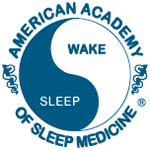 Sleep loss and alcohol both have negative effects on driving performance. Are people with obstructive sleep apnea more vulnerable to these effects?
Sleep loss and alcohol both have negative effects on driving performance. Are people with obstructive sleep apnea more vulnerable to these effects?A new study from Australia involved 38 people with untreated OSA. They were compared with 20 healthy controls.
Participants were tested three times in a driving simulator. They drove after a normal night of sleep and after only four hours of sleep.
They also drove after consuming enough vodka to raise their blood alcohol concentration level to 0.05 grams per deciliter; this means they had 50 milligrams of alcohol in every 100 milliliters of blood. For most drivers in Australia a BAC level of 0.05 or higher is considered “drink driving.”
The simulators tracked steering, speed control and other measures of driving performance. These measures have been linked to car crashes, noted a study summary for patients.
Results show that driving ability was much more impaired in people with OSA; 24 people with sleep apnea crashed during simulated driving. In contrast, only one person in the control group crashed.
After only four hours of sleep, people with OSA were four times more likely to crash than after a night of normal sleep; they were two times more likely to crash after alcohol consumption.
People with OSA also had more trouble steering the simulator; after sleep loss and alcohol consumption their steering ability was about 40 percent worse than controls.
But steering wasn’t their only problem. People with sleep apnea also had trouble keeping their eyes open. Prolonged eye closures of more than two seconds and brief “microsleeps” were significant crash predictors in people with OSA.
The AASM reports that daytime sleepiness is a common symptom of sleep apnea. Breathing pauses related to sleep apnea cause brief arousals from sleep. These arousals can occur hundreds of times during one night of sleep.
A study in the March issue of the journal Sleep found that a simulated driving test is a suitable tool to measure daytime alertness in people with OSA. A previous study in the journal Sleep described a number of driving impairments in people with sleep apnea; it found that the poor performance appeared to be related to lapses in attention.
Earlier this year the Sleep Education Blog reported that the alerting effect of roadside “rumble strips” may last for only a few minutes. In July the blog reported that some car makers are using high-tech systems to help prevent drowsy-driving accidents.
Learn more about drowsy driving on SleepEducation.com.
Image by Stefan Van der Straeten







No comments:
Post a Comment